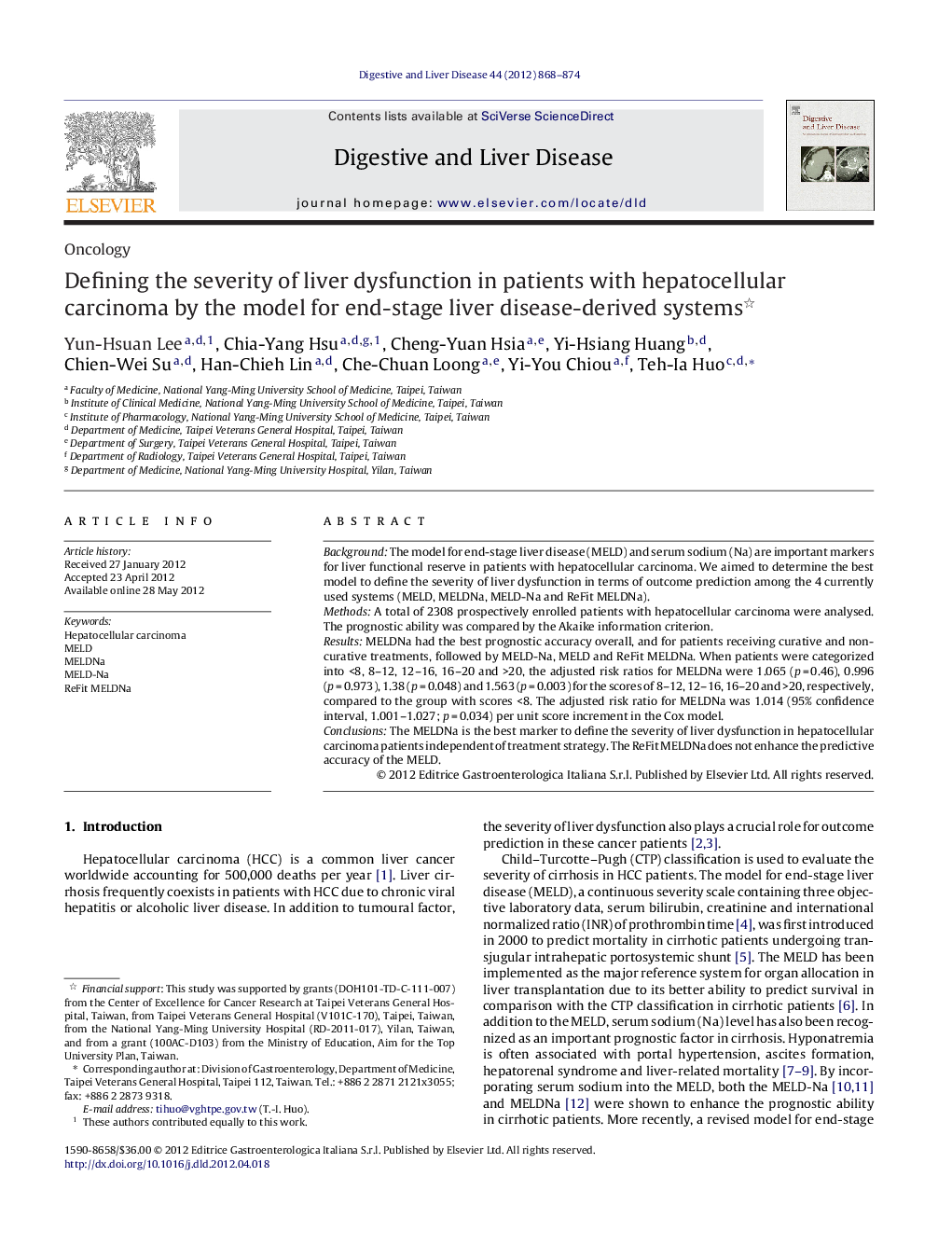| Article ID | Journal | Published Year | Pages | File Type |
|---|---|---|---|---|
| 3262483 | Digestive and Liver Disease | 2012 | 7 Pages |
BackgroundThe model for end-stage liver disease (MELD) and serum sodium (Na) are important markers for liver functional reserve in patients with hepatocellular carcinoma. We aimed to determine the best model to define the severity of liver dysfunction in terms of outcome prediction among the 4 currently used systems (MELD, MELDNa, MELD-Na and ReFit MELDNa).MethodsA total of 2308 prospectively enrolled patients with hepatocellular carcinoma were analysed. The prognostic ability was compared by the Akaike information criterion.ResultsMELDNa had the best prognostic accuracy overall, and for patients receiving curative and non-curative treatments, followed by MELD-Na, MELD and ReFit MELDNa. When patients were categorized into <8, 8–12, 12–16, 16–20 and >20, the adjusted risk ratios for MELDNa were 1.065 (p = 0.46), 0.996 (p = 0.973), 1.38 (p = 0.048) and 1.563 (p = 0.003) for the scores of 8–12, 12–16, 16–20 and >20, respectively, compared to the group with scores <8. The adjusted risk ratio for MELDNa was 1.014 (95% confidence interval, 1.001–1.027; p = 0.034) per unit score increment in the Cox model.ConclusionsThe MELDNa is the best marker to define the severity of liver dysfunction in hepatocellular carcinoma patients independent of treatment strategy. The ReFit MELDNa does not enhance the predictive accuracy of the MELD.
